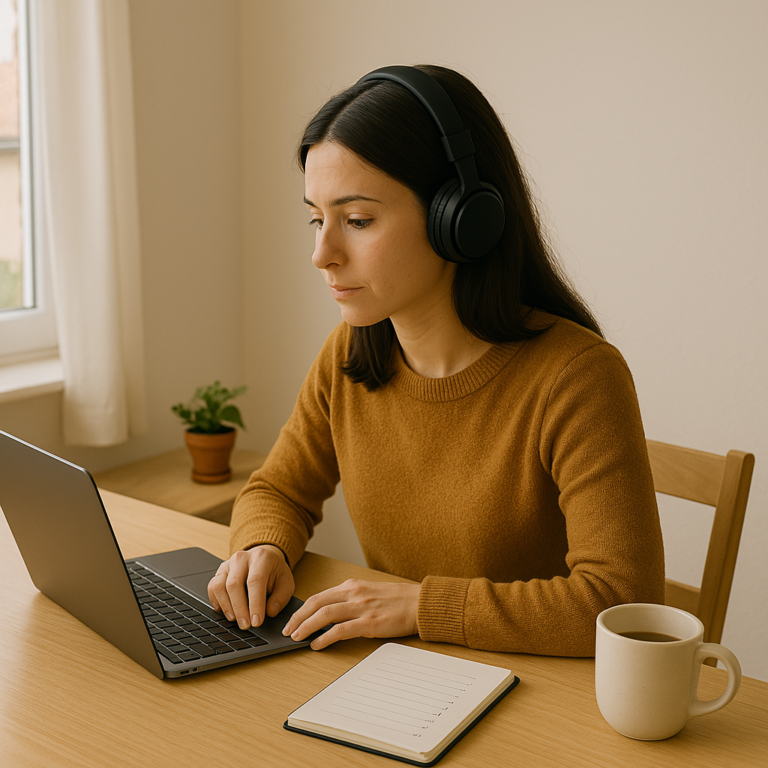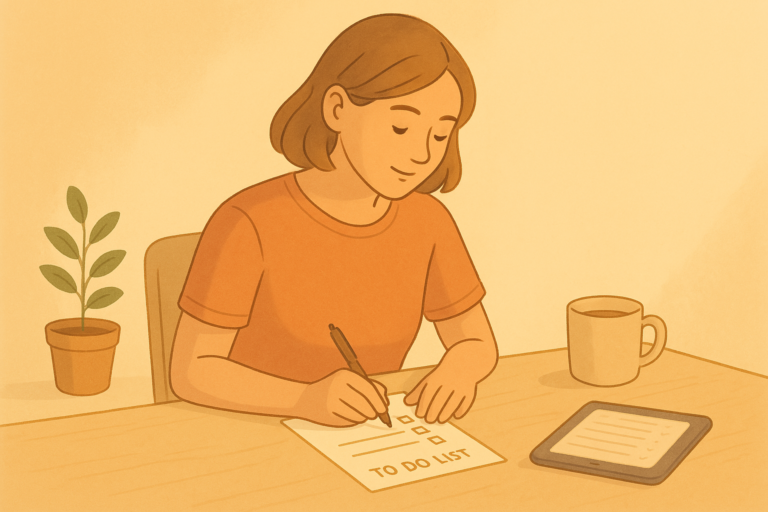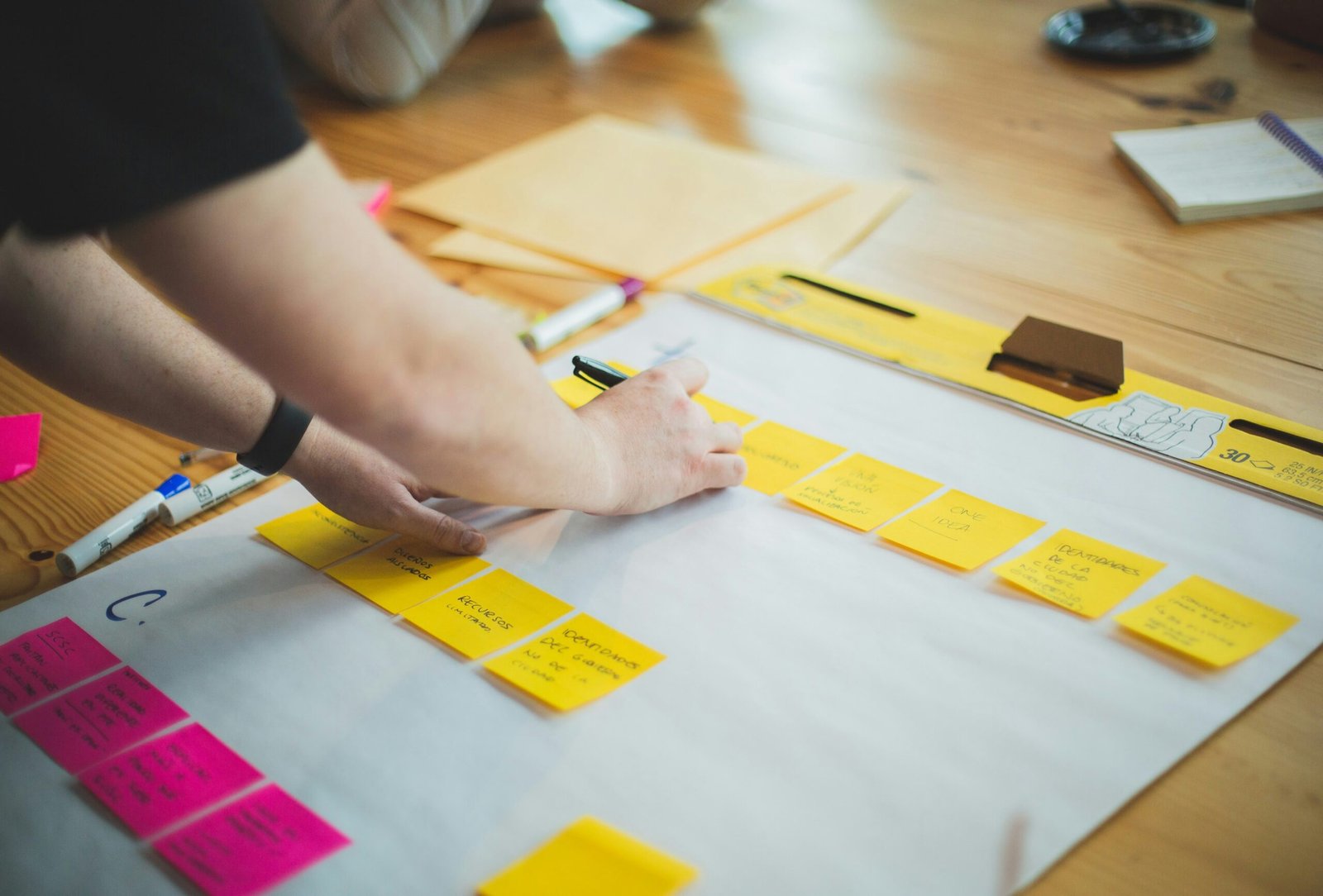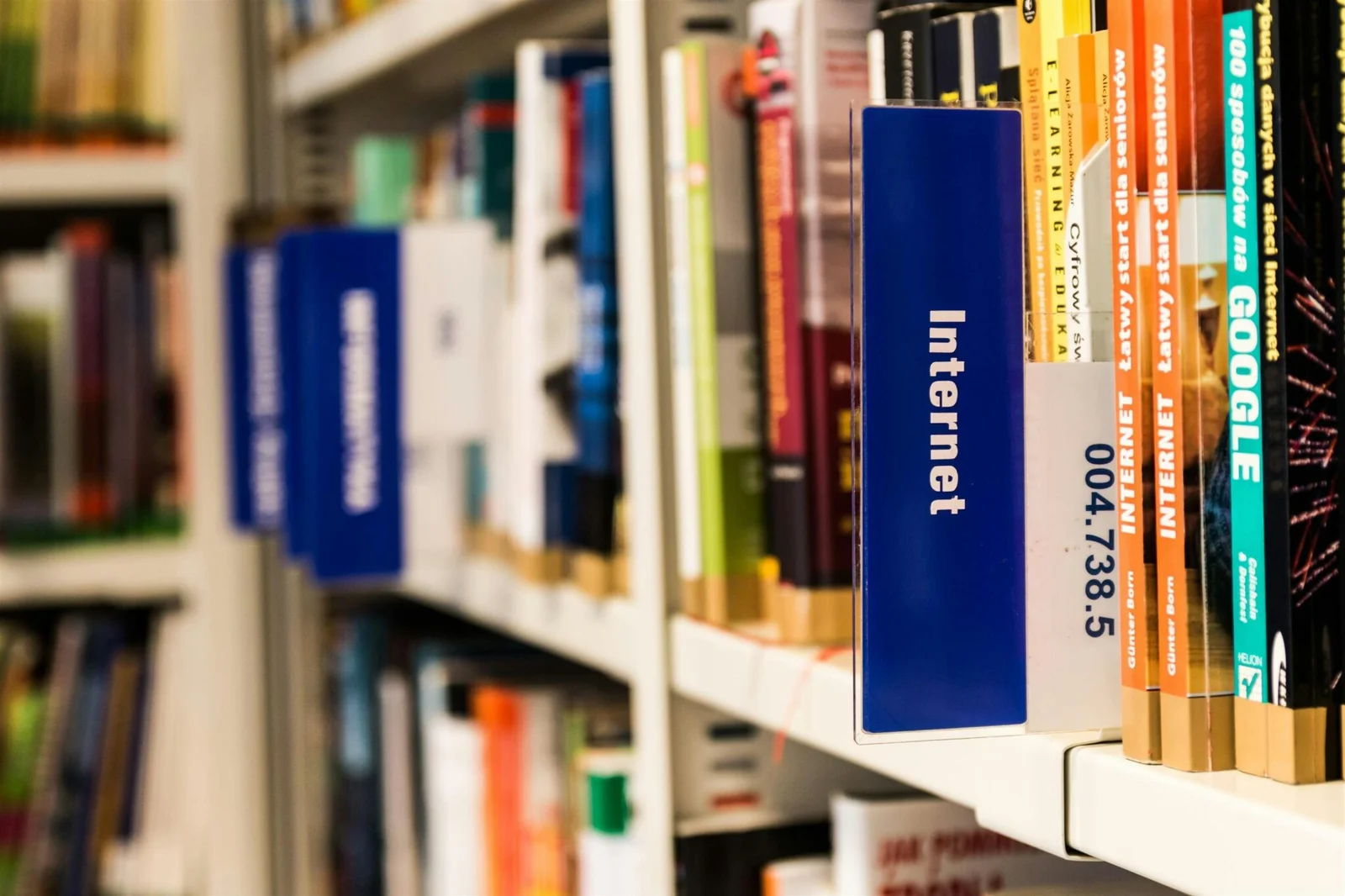ADHDとともに生きる
見つけよう、自分らしく生きるADHDとの向き合い方
ようこそ「ADHDとともに生きる」へ。
このサイトは、ADHDを持つすべての方が「もっとラクに」「もっと自分らしく」暮らしていけるように、実体験をもとにしたヒントや工夫、共感を届ける場所です。
私は不注意優勢型ADHDの診断を受けたことをきっかけに、自分の脳の動き方や、集中・時間管理・タスクの進め方に試行錯誤しながら向き合ってきました。その中で気づいたのは、“ADHDのある脳”と“自分自身”を敵にせず、味方にしていくことの大切さでした。
こんなことを発信しています:
🛠 役立つリソースとツール:日常生活に使えるアプリ、チェックリスト、テンプレートなどを紹介
💡 実践的な戦略とヒント:集中力、時間管理、ルーティンづくり、忘れ物対策など、ADHDにやさしい工夫をまとめています
🌱 体験談・ストーリー:失敗談も、うまくいった日も、リアルな声として共有
👪 家族・パートナー向けアドバイス:ADHDのある大切な人を支えるためのヒント
読者のあなたへ
このサイトの主役は、あなたです。私は少しだけ前を歩く「メンター」として、経験と学びを分かち合う役割。完璧じゃなくていい、小さな一歩でも前に進めるように。
📬 新しい記事を読みたい方は、下の「最新記事」セクションをチェック!
🫶 共感したら、ぜひ「いいね」やシェアで応援してください。
小さな気づきが、大きな安心になりますように。
あなたの毎日が、少しずつ生きやすくなりますように。
自己紹介
はじめまして。「ADHDとともに生きる」をご覧いただきありがとうございます。
このサイトは、ADHDを持つ人が少しでも自分らしく、そして前向きに生きていけるようにという思いから立ち上げました。
私自身、不注意優勢型ADHDの診断を受けてから、集中できないことやタスク管理の苦手さ、人とのすれ違いに何度も悩んできました。でも同時に、工夫しながら暮らすことで“できること”が少しずつ増えていった実感もあります。
ここでは、そんな試行錯誤の中で見つけた「ちょっとラクになるヒント」や、「あ、私だけじゃないんだ」と感じられるようなリアルな体験を発信しています。
このサイトで大切にしているのは、次の3つのポイントです:
🌟 メンター&ヒーローの視点
このサイトのヒーローは、あなた(読者)です。私は、少しだけ先を歩くメンターとして、自分の経験をもとにあなたのサポートをしていきたいと思っています。
💬 会話のように読みやすく
「読んでいてホッとする」「わかる…!」と感じられるような、親しみやすく自然な語り口で書くことを心がけています。
🛠 実用的で使える情報
毎日の生活にすぐに取り入れられる、現実的で実践しやすいアイデアやツールを紹介しています。
あなたの一歩を応援します
このサイトは完璧な情報の宝庫ではなく、むしろ「一緒に悩みながら進んでいく場所」でありたいと思っています。だからこそ、どんな小さな気づきも、ここでは大切な“前進”です。
どうぞ、気になる記事から自由に読んでみてください。そしてもし、心に響く何かがあれば、ぜひその気持ちをコメントで教えてくださいね。
あなたの日々が、少しずつ軽くなりますように。

最新の記事

ADHD薬は本当に必要?知っておきたい基本知識
悩みと不安から始まる薬との向き合い方 「薬を飲まないと、私は普通じゃないの?」 そんな不安が頭をよぎったことはありませんか? ADHDの薬に対する疑問と不安は、多くの人が感じているリアルな悩みです。 私自身、ADHDの診断を受けたあと「薬を飲むべきかどうか」で何度も悩みました。周りからは「薬に頼りすぎない方がいいよ」と言われる一方で、日常生活はうまく回らず、自己嫌悪のループ。処方箋を前にして、「これって自分を否定してることになるのかな?」と感じたこともありました。 でも、ある日ふと思ったんです。“薬を使うかどうか”は、自分を知り、選択肢を持つための第一歩なんだって。 この記事では、ADHD薬に関する基本知識をわかりやすくお伝えします。「本当に必要なの?」「副作用は?」「どんな薬があるの?」という疑問を、実体験も交えて解説していきます。 ADHD薬はなぜ処方されるのか? ADHDの特性と日常での困りごと ADHD(注意欠如・多動症)は、集中力の維持、タスクの完了、感情のコントロールに困難を伴うことが多い発達特性です。 こうした特性が、学業・仕事・人間関係に大きく影響することもあります。 脳内の働きと薬の関係 ADHDの人の脳では、ドーパミンやノルアドレナリンといった神経伝達物質の働きが不安定であることが分かっています。これが注意力や衝動のコントロールに関係しているのです。 ADHD薬はこれらの神経伝達物質の量や働きを調整することで、脳の機能をサポートします。 薬がサポートする役割 薬は症状を“根本的に治す”ものではありませんが、「困りごとを軽減するツール」として処方されるのです。 ADHD薬の種類とそれぞれの特徴 中枢刺激薬 非刺激薬 効果・持続時間・副作用 薬の種類 効果の持続…

ADHDのための時間管理術:シンプルで効果的な戦略
- On
- InBlog, Strategies & Tips
「時間管理=良い手帳やアプリを見つけること」だと思っていた時期がありました。でも、どんなにシステムを試しても、結局は時間に追われ、締切を逃し、スケジュールが崩壊する日々。 本当に変化が始まったのは、「ADHDが時間感覚にどう影響するか」を理解してからでした。研究によると、ADHDの人は“タイムブラインドネス(時間の見積もりや経過の把握が苦手)”を感じやすいと言われています。 でも朗報です。正しい戦略を使えば、時間管理はもっと簡単に、そして自然にできるようになります。 1. タスクを小さく分ける 大きなタスクは圧倒感を生み、先延ばしや回避を招きます。 ✅ 試してみて:「家を掃除する」ではなく、「食器を洗う」「リビングを掃除機かける」「洗濯物をたたむ」など、具体的なステップに分ける。 細かくすることで達成感が生まれ、行動のハードルが下がります。 2. 外部リマインダーやアラームを活用する ADHDでは時間を忘れやすいため、外からの“合図”が重要です。 ✅ 試してみて:アラームやカレンダー通知、TodoistやGoogle Keepなどのアプリを使って、締切・予定・日常タスクをリマインドしましょう。 3. 「2分ルール」を導入する 小さなタスクが積み重なると、部屋も頭の中もゴチャゴチャに。 ✅ 試してみて:「2分以内でできることは、今すぐやる」。 4. 時間ブロックを使ってスケジュールを組む…

ADHDとルーティンの作り方:シンプルなステップバイステップガイド
- On
- InBlog, Strategies & Tips
毎朝「今日は計画的に過ごそう!」と意気込んで目覚めるのに、気づけばお昼には計画は崩壊。予定は忘れ、気が散って別のことに夢中になり、自分の一貫性のなさにイライラ。手帳を何冊買っても、どれだけ頑張っても、ルーティンはなかなか定着しませんでした。 でもある時、「ADHD脳に合った別の方法」を知ったことで、状況は一変しました。 なぜ一般的なルーティンはADHDに合わないのか? 多くのルーティンに関するアドバイスは、「決まった時間に同じことを繰り返す」ことを前提にしています。でも、ADHDの脳は「新しさ」を求め、タスクの切り替えが苦手で、かたくなな構造を拒否する傾向があります。 大切なのは、定型的なルーティンに自分を無理に当てはめることではなく、ADHD特有の傾向に寄り添った柔軟なシステムを作ることです。 ステップ1:小さく始めて、徐々に広げる 一番よくある失敗は、「一気に生活全体を変えようとすること」。これは燃え尽きや挫折のもとです。 ✅ おすすめ:まずは1〜2個の小さな習慣から始めましょう。 1週間ほどその習慣に集中し、慣れてきたら次の要素を追加していきましょう。 ステップ2:既存の習慣に新しい習慣をくっつける ADHDの脳は「関連付け」が得意です。新しい習慣を“思い出す”のではなく、既存の動作に組み込むことで自然に習慣化できます。 ✅ おすすめ:「薬を飲み忘れる」なら、歯ブラシの隣に置いて「歯磨きのあとに飲む」と決める。 この「ハビットスタッキング(習慣の積み上げ)」は、習慣化のハードルを大幅に下げてくれます。 ステップ3:外部のリマインダーを使う ADHDのワーキングメモリは頼りにならないことも多いので、記憶に頼らず**視覚的・聴覚的な“合図”**を使いましょう。 ✅ おすすめ: ステップ4:楽しく&ご褒美を組み込む ADHD脳は「退屈=やらない」。ルーティンに楽しさを加えることで定着しやすくなります。 ✅…


